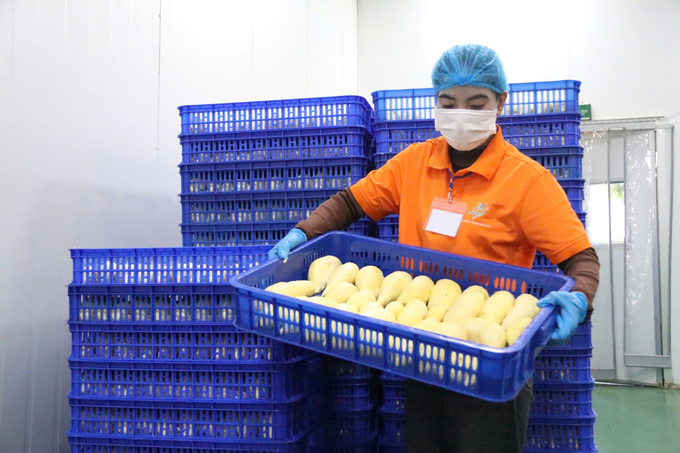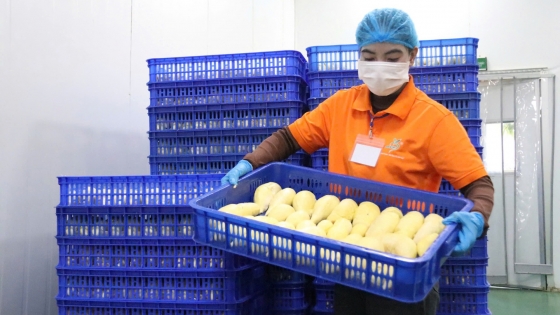(VAN) The main reasons why Vietnamese fruits have not been able to penetrate deeply into the Chinese market are short preservation time and high logistics costs.
According to Nguyen Dinh Tung, General Director of Vina T&T Co., Ltd, like people in the southern region of China, people in the northern region really like Vietnamese fruits. This was clearly demonstrated through the Vietnam Fruit Festival that was recently held very successfully in Beijing and consumers in this city warmly welcomed Vietnamese fruits.
However, Vietnamese fruits are still rarely seen in Northern China. The key problem that prevents the success of Vietnamese fruits is preservation technology. To give an example, durian is produced in the southern provinces of Vietnam. It takes a long time to transport the fruit from the harvest sites to Northern Vietnam for export to the southern provinces of China, then wait for customs clearance. By the time it reaches consumers, the preservation period is almost over. Therefore, it is very difficult to bring Vietnamese durian as well as many other fruits to the North of China. Only shipments that are still fresh when brought to the North of China are allowed for distribution.

Freezing durian will help Vietnam transport products to northern localities of China with guaranteed quality. Photo: TL.
In the context that Vietnamese fruits are present in very little in Northern China due to limitations in preservation technology, the two Protocols allowing frozen durian and fresh coconut from Vietnam to be exported to China are considered very good news. “Frozen durian has a very long preservation time, it is completely possible to bring it to Northern China as well as other areas deep in the country’s interior parts,” said General Director Nguyen Dinh Tung.
Fresh Vietnamese coconuts now have good preservation technology, which can extend the preservation time up to 70 days. With such a long preservation time, it is completely possible to bring fresh Vietnamese coconuts to Northern China and other regions while still ensuring quality when they reach consumers.
From the case of frozen durian and fresh coconut, General Director Tung emphasized the crucial role of preservation technology. Vietnamese fruits to China can only be transported by road or sea to reach consumers at an accessible price. If transported by air, the transportation cost will increase the price of the fruit many-fold, making it very difficult to compete in the foreign market.
China currently imports a large amount of durian every year, up to more than 1 million tons, but only nearly 30% of the country’s population has access to durian because the price of this fruit remains fairly high. Among the reasons that push the retail price of durian in China, logistics stands out as an important issue.
“In order to transport fruits to China by sea or road faster and at lower cost, improving logistics needs to be focused on and promoted by relevant units. This would thereby help to speed up the time to bring Vietnamese fruits to China, opening up more opportunities to go further in the Chinese market,” said the General Director of Vina T&T.
Aiming to bring Vietnamese fruits to the North and Inner Mongolia region of China, Vina T&T is focusing on fresh coconuts, because as mentioned above, preservation technology can help keep coconuts fresh for many days. Vina T&T has signed contracts with two Chinese enterprises, including a distributor and a logistics enterprise. With the assistance of these partners, Vina T&T is expecting to export fresh coconut shipments to the Chinese market as soon as possible, possibly even this October.
Agriculture News | Agri Products Price



